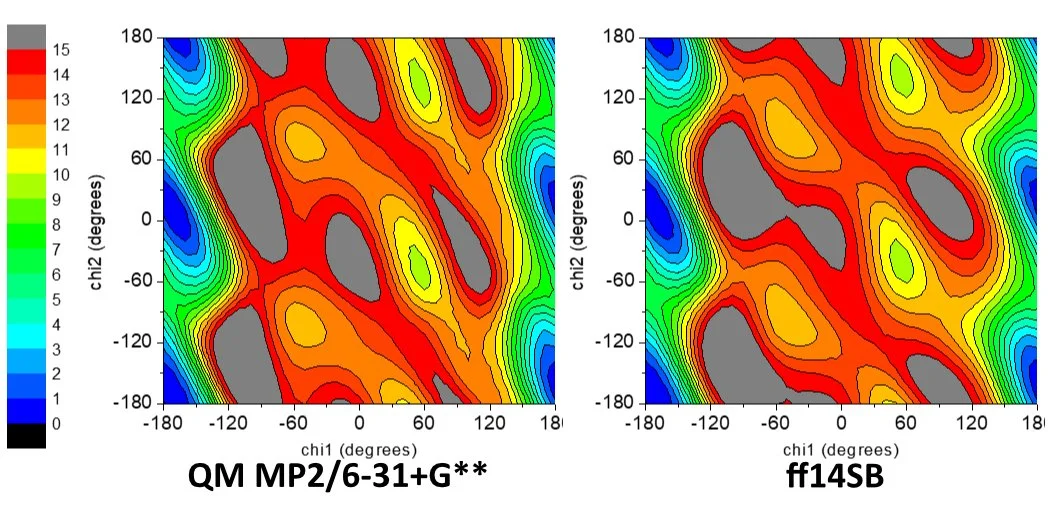Research Projects
Biomolecules undergo constant structural changes as they perform their functions. These changes range from small fluctuations of ligands bound tightly to a receptor, to larger but transient breathing events, and even adoption of completely different tertiary structures as occurs during protein folding. In the Simmerling group, we are interested in gaining insight into the biophysics of these changes, the interactions that drive them, and how they are modified in cases of disease or drug resistance.
Since most experimental techniques provide averages over time and/or macroscopic numbers of molecules, we develop and use a wide range of computer simulation methods to model these systems and understand the coupling between structure, energy, and dynamics. Each of our projects is closely coupled to experimental work by our collaborators.



